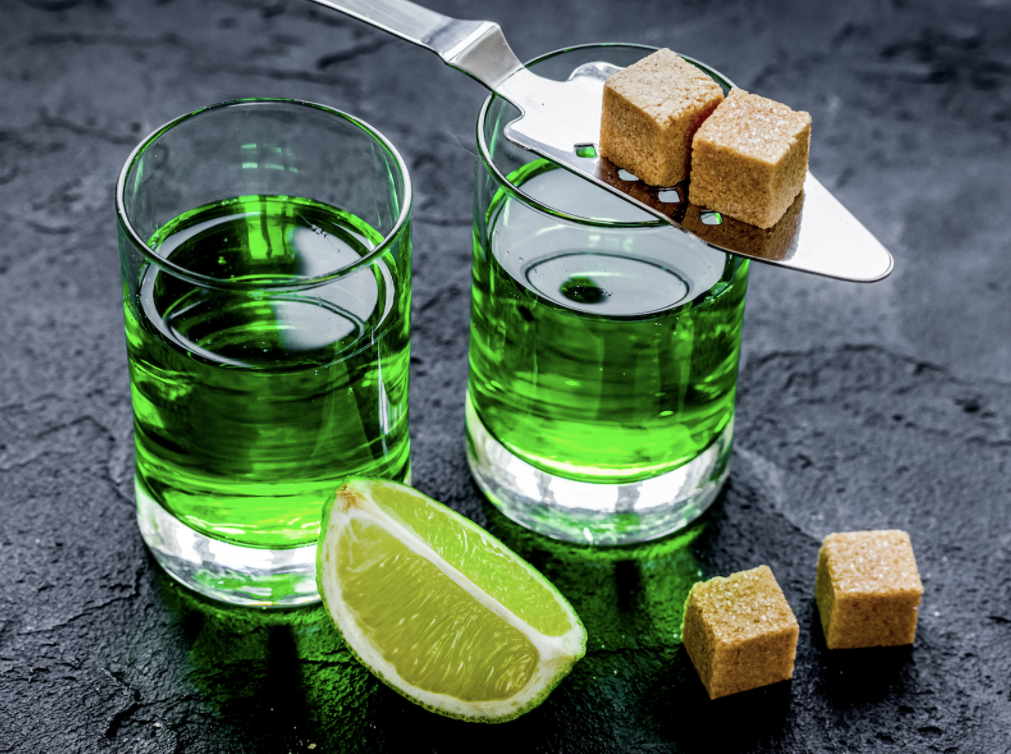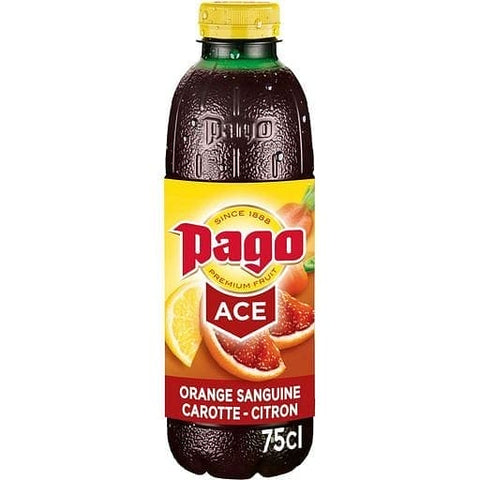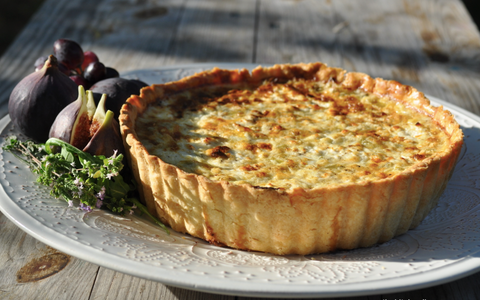Green fairy is a kind of alcoholic drink that uses the green color and makes by distillation. To make this drink, you need to put leaves and flowers of the wormwood plant in with some alcohol.
After a few days, the green color will appear on the liquid solution. The final step is to add sugar cane. You can also add water if you want.
- The green fairy was created by a French chemist named Henri Louis Pernod during the 18th century. He discovered this drink when he was trying to cure stomach aches caused by a disease called colic.
He, later on, started selling this drink as a medicine until it became trendy in France and other parts of Europe. The name "green fairy" comes from its green color, which resembles fairies in folklore tales such as Peter Pan or Tinkerbell.
Why absinthe is called the Green Fairy?
In the 19th century, absinthe was called the Green Fairy because of its green color and the supposed hallucinogenic effects of thujone.
A French cartoonist named Henri Gerbault illustrated the Green Fairy as a beautiful woman with butterfly wings, dressed in flowing green robes. The Green Fairy was said to be a spirit of intoxication that could inspire artists and poets to great heights and madness. This potent spirit liked to play tricks on humans — she might make you believe you could fly, but if you jumped from a window, she wouldn't keep you from falling to your death.
Artists were drawn to absinthe's high alcoholic content and its supposed hallucinogenic effects from thujone. Picasso, Degas and van Gogh were among those who enjoyed a glass or two of absinthe at their local cafes. Picasso painted his famous work "The Absinthe Drinker," showing an emaciated young man holding a glass of drink. Van Gogh supposedly cut off his ear while under the influence of absinthe.
- Absinthe is a distilled spirit made from a variety of herbs and spices. The two most essential herbs are wormwood (Artemisia absinthium) and aniseed. It was used medicinally since ancient times, originating in Greece and Egypt, where it was believed to have healing properties.
When the French started producing absinthe as a drink in the late 18th century, they became renowned for their unusual flavour and high alcohol content (70% or more). In addition, it was often diluted with water before drinking, which created a cloudy appearance (the 'louche' effect). During this time, absinthe became more popular than wine.
Absinthe's reputation was harmed by its status as a banned substance for most of the 20th century. However, in the 2000s, it was legalized again in most countries, and today there are hundreds of absinthe brands available around the world.
Does Green Fairy absinthe contain wormwood?
Green fairy absinthe is an anise-flavoured spirit derived from botanicals, including the flowers and leaves of the medicinal plant Artemisia absinthium, also called wormwood. In addition to anise, green fairy absinthe typically contains fennel, coriander and other medicinal herbs. The spirit typically is bottled at between 45% and 74% alcohol by volume.
The absinthe is distilled with a high level of alcohol by volume (ABV). Absinthe originated in the canton of Neuchâtel in Switzerland in the late 18th century. It became popular as an alcoholic drink in late 19th- and early 20th-century France, particularly among Parisian artists and writers whose romantic associations with the glass still linger.
In 1905, the French government banned absinthe because it was suspected (though never proven) to be a psychoactive drug due to the presence of thujone; it was portrayed as both addictive and psychoactive (mind-altering), causing psychedelic effects similar to LSD.
The Green Fairy contains wormwood in small quantity
It contains wormwood, but the amount may be too small to have any psychoactive effects.
If you're looking for a more psychedelic experience (and don't mind a little bit of risk), try another absinthe that contains more wormwood. Wormwood has been used for thousands of years in various forms, from teas to tinctures. The psychoactive ingredient in wormwood is thujone, which causes neural excitation in high doses. A few absinthes contain enough thujone to cause psychoactive effects:
- Lucid (contains both Grande Wormwood and Petite Wormwood)
- Mata Hari Absinthe Superieure (contains both Grande Wormwood and Petite Wormwood)
- Pernod Absinthe (contains Grande Wormwood only)
- Moulin Rouge Absinthe (contains Petite Wormwood only)
Why is wormwood illegal?
Wormwood is a plant that has been used for centuries as a herbal remedy for specific ailments. Furthermore, it was a key ingredient in absinthe. The plant contains the chemical thujone, which is toxic in high doses. It can cause seizures, tremors and other serious health problems.
Though wormwood is not illegal per se, the Food and Drug Administration (FDA) has banned the use of the chemical thujone from alcoholic beverages sold in the UK.
According to legend, wormwood grew over Christ's grave when he was interred, and it's still used today in Eastern European religious ceremonies. Historically, wormwood has been used to cure intestinal worms and as a general tonic for various ailments, including liver disease and irregular menstruation. Purported Benefits
Wormwood has several purported medical benefits that are backed up by science:

It may help kill cancer cells: One study found that wormwood extract may induce cell death in human leukemia cancer cells. This study appeared in the journal Evidence-Based Complementary and Alternative Medicine in 2011. Other studies have shown similar benefits of wormwood extract on breast cancer cells and different types of cancer cells. However, more research is needed to determine wormwood extract.
It is OK to drink Absinthe straight
Yes, it's OK to drink absinthe straight. It may be more difficult to appreciate at first, but the flavour is there.
Drinking absinthe straight is preferred among enthusiasts, and some find it much easier to appreciate this way.
Absinthe was designed to be drunk neat, without sugar or water. It's only since the ban in 1915 that drinkers have started adding sugar and water.
- With sugar, though, you are very likely to miss out on some of the subtle flavours and aromas drowned out by the sweetness of sugar. You are diluting the drink with water, so it's not as strong. Still, also again, you will miss out on some of the flavours and aromas, especially with traditional French absinthes, which are pretty low in alcohol content, because the thujone is heavier than alcohol and floats at the top of your glass.
Buying Absinthe in the UK
There are two answers to this question, and the answer is yes and no.
- Firstly absinthe is available in the UK, but it is not absinthe. It is a drink that has been produced by taking a base spirit and adding a natural herbal flavour which in this case is absinthe; this is then bottled as absinthe. This type of product is called an absinthe essence. This means you can buy absinthe in the UK; however, it will not have any wormwood or thujone in it as these have been banned since 2005 due to the EU making a mistake when they passed a law.
- The second answer is yes you can buy real absinthe in the UK however it has to be imported from France or Spain. Absinthe has been legalized in the UK since 2007; however, this was only so bars could serve it as part of their cocktail offering. Therefore, if you wish to buy real absinthe in the UK for personal consumption, you must import it yourself.
So to answer your question, yes you can buy absinthe in the UK, but we suggest you don't buy anything that says "absinth" as this will be one of the fake products mentioned above!
Absinthe is a type of alcohol
Absinthe is a type of alcohol and the name of a specific drink - one that is made traditionally and contains wormwood, fennel, anise, and other herbs.
There are specific differences between absinthe and other alcoholic drinks
Absinthe has a unique taste and smell, often described as black liquor ice or anise. It's also bitterer than other alcoholic drinks and usually has higher alcohol content (40-75% ABV).
It was first produced in Switzerland as a medicinal tonic and elixir, but it gained popularity during the 1800s as an alcoholic drink for artists and writers in France.
The wormwood contained in absinthe was thought responsible for hallucinations and other mind-altering effects that people experienced after drinking it. However, modern studies have shown that this is simply due to the alcohol content. The thujone content within wormwood is not high enough to cause hallucinations, even if you drink large amounts of absinthe.
Green Fairy Absinthe contain thujone
Drinking Green Fairy absinthe does not get you high. The thujone in it is too low to have any psychoactive effect.
Green Fairy absinthe contains only trace amounts of thujone, which is not enough to cause hallucinogenic effects.
The FDA allows the importation of alcoholic beverages containing up to 10 parts per million of thujone. The level in Green Fairy absinthe is less than 0.5 parts per million.
Green Fairy Absinthe Superieure contains less than half the thujone found in the famous herb wormwood. In addition, many other herbs in the recipe have zero thujone content, including anise and fennel.
We can drink Absinthe as a shot
You can drink it as a shot, but that would be dumb. Absinthe is a bitter spirit, so it's not very enjoyable in its pure form. The traditional way to drink is to mix 1 oz. of absinthe with 2-3 oz. of water and serve over ice in an absinthe glass.
There are some other ways to enjoy it:
- As the base spirit: Absinthe is an excellent substitute for vodka or gin in most cocktails. It has a strong flavour, so if you're mixing with citrus juices, you'll want to do 2 parts absinthe to 3 parts juice (instead of 2:1).
- As a rinse/wash: You can use dry absinthe as a mouth rinse after eating flavorful foods like garlic or hot sauce. You get the flavour without having to drink it. Some bars use this technique for oysters, and there are many recipes for cooking with absinthe (pouring it over the dish at the end).
- As a substitute for herbal bitters: Absinthe makes just about any cocktail more herbaceous and flavorful, but if you're using other bitters, you may want to hold off on using absinthe unless your recipe specifically mentions it.
We can mix Absinthe with anything
The answer to the first part of your question is straightforward — yes. You can mix absinthe with just about anything or even drink it straight up. However, the main reason for mixing it is to reduce the bitterness and increase the aroma.
When you drink absinthe straight up, it will be extremely bitter due to the high alcohol content. Ice can help a bit with both the bitterness and the alcohol burn. Anything else will do a better job of masking the bitterness and accentuating the herbal flavours. Lemon is a popular choice in Europe (see this post), as are various fruit juices.
- If you want to add more sweetness without adding more calories, try using simple syrup (sugar dissolved in water) instead of fruit juice.
Thus Absinthe is a distilled spirit made from various herbs such as wormwood, anise, and fennel. Wormwood is the essential ingredient and contains the chemical thujone. Absinthe was very popular in France before and during WWI. French soldiers were given absinthe as a nerve tonic to calm them down and provide them with courage. As a result, the French troops came to be known as the Green Devils because they could sleep on the battlefield before attacking!
We can say that the hallucinogenic effects of absinthe are due to the thujone, which is found in wormwood. Thujone acts on the same brain receptors as cannabis. Absinthe can cause hallucinations (seeing things that aren't there), synesthesia (hearing colors and seeing sounds), and feelings of euphoria, sedation and relaxation.




